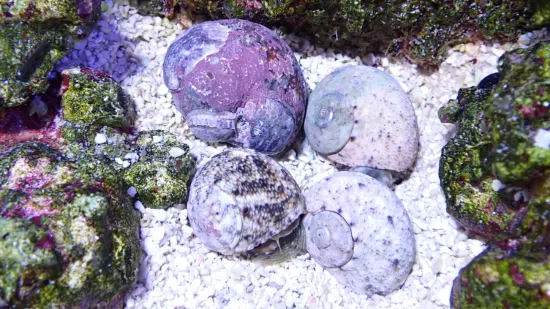Yes, like corals and other calcifying invertebrates, saltwater snails rely on calcium and carbonate ions to build and maintain strong shells. Without adequate calcium, shells may become thin, pitted, or eroded, leaving snails vulnerable to stress and predation.
Most reef tanks already maintain calcium in the 400—450 ppm range to support corals, which also keeps snails healthy. However, in fish-only systems or tanks with low calcium demand, levels may drift too low, affecting shell growth.
Research on species like Pomacea dolioides shows that juveniles don't survive long without dissolved calcium; with calcium added, they grow faster, get thicker shells, and recover better from damage. (Silveira, M.F., Skiada, D., Mazzi, D., & Almas, E. (2024). Culture of the gastropod Pomacea dolioides (Reeve, 1856): effects of calcium on growth, survival and shell regeneration. Boletim do Instituto de Pesca, 51.)
Pro Tips for maintaining snail shell health:
- Test calcium regularly, aiming for 400—450 ppm.
- Use a balanced reef salt mix to maintain calcium, alkalinity, and magnesium.
- Supplement with calcium additives only if levels fall below reef-safe standards.
- Provide a stable pH (8.1—8.4) to ensure proper carbonate availability.
- Watch for shell pitting or chalky texture, early warning signs of deficiency.
Species like Trochus Snails, Astrea Snails, and Cerith Snails especially benefit from stable calcium, since they spend much of their lives scraping hard surfaces and need durable shells.
Bottom line: Saltwater snails don't always need extra calcium beyond reef standards, but they absolutely depend on consistent levels to maintain shell integrity. Keeping calcium stable protects your snails and your entire reef ecosystem. Browse our reef-safe clean-up crew snails today and support a healthier, longer-lasting crew.










